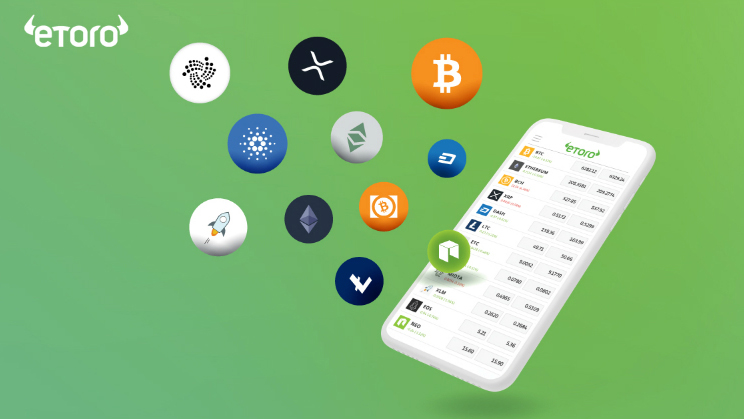Crypto is back in vogue! Interest in blockchain investing has boomed over the past year, with many investors seeking to diversify their portfolios with cryptoassets. So too has interest in a new way for investors to bolster their existing crypto holdings: staking.
Not only has crypto staking hit the mainstream, it’s become more accessible than ever, as exchanges like eToro have rolled out dedicated services to give everyday investors the opportunity to get involved. But hold up – what exactly is staking and what are the benefits involved? Let’s get into it.
What is crypto staking?
At its core, crypto staking allows investors to put their cryptoassets to work in return for rewards. It’s often compared to placing cash in a savings account or term deposit: in return for following requirements or locking your money away for a set period of time, you earn interest. But with staking, you're using your cryptoassets to earn more coins or tokens.
That’s the gist, but there’s a little bit more involved.
If you’re familiar with the basics of crypto, you’ll have heard of blockchains - decentralised, digital ledgers used to record transactions for most crypto assets. Different cryptoassets have different mechanisms to maintain the integrity of the blockchain though. For example, Bitcoin uses ‘Proof of Work’ (PoW) whereby people compete to place the next block in the chain by solving a numeric problem. The person who does is then rewarded with Bitcoin.
However, the likes of Cardano, Ethereum 2.0 and other crypto assets rely on a mechanism called ‘Proof of Stake’ (PoS).
Under the PoS system, only holders of a particular cryptoasset who have agreed to ‘stake’ their coins are eligible to place (or 'forge’) the next block in the blockchain. So it’s not as easy as simply owning a particular type of cryptoasset – it involves actually locking it away for a set amount of time. The forger of the next block in the chain is then assigned randomly, but the more coins staked, the greater the chance of being selected.
The benefits of staking
At this point you’re probably thinking that this all seems like a lot of effort, so what are the benefits of crypto staking?
The major one is that people who stake their existing cryptoassets to help maintain the integrity of the blockchain can be rewarded by receiving more coins or tokens. This will obviously be a pretty alluring incentive for many investors, as it’s a way to grow the number of coins or tokens you have without having to purchase new ones.
Another benefit of staking is that it’s far more accessible to regular investors. Unlike Bitcoin’s blockchain, where only people with access to a lot of computing power can mine the currency, the Proof of Stake mechanism allows people to support the blockchain just by holding onto coins. That also makes it a far less energy-intensive practice than Bitcoin mining, which might be an important personal consideration for some.

How do you stake on eToro, and what crypto can you stake?
While you can stake on your own, it does require a fair bit of know-how which might be daunting for regular investors – plus there are usually minimum coin requirements, which can put it out of reach for those with smaller holdings.
But the good news is that crypto exchanges like eToro have come up with a solution to make staking more accessible (and simpler) for everyday investors.
eToro allows investors to stake cryptoassets like Cardano, Ethereum 2.0 and Tron on their online platform, simply by holding an open position on their eligible crypto asset for a minimum period of time – at least seven days for Tron and nine days for Cardano.
Users then start to earn rewards in the form of more crypto assets, which are automatically paid out on a monthly basis. Of course, eToro does take a cut for the service, but investors can expect to receive a minimum of 75% of the monthly staking yield – you can find more info on fees here.
Anything else you need to know?
Like any investment, there are costs and risks involved with crypto staking that are worth considering. For instance, if you're wanting to stake through an exchange, you’re likely to be charged a fee or a percentage of the total reward as compensation for the service.
And it won’t be news to you that the value of cryptoassets can be quite volatile. That means that if you do choose to lock your coins or tokens away for a longer period of time via staking, there’s always the possibility that they could decrease in value.
If you’re interested in giving staking a shot, then check out eToro’s dedicated staking service, where you’ll also be able to find answers to more of your burning questions about the staking process.
from TechRadar - All the latest technology news https://ift.tt/3pV3c3F
No comments:
Post a Comment